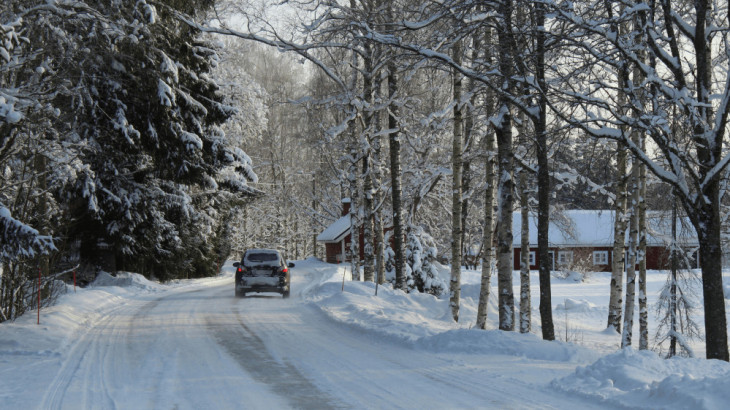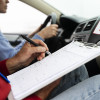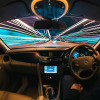By The Acclaim Team on 25th November 2019 in News
Driving In Snow & Icy Conditions
Allow more time before starting your journey to clear car windows and mirrors of snow and ice.
Use lukewarm water or de-icer to defrost the outside windows of your vehicle. You should never use hot or boiling water.
Make sure your auto wiper control is switched off before turning the engine on as this could damage the wipers if they are frozen to the windscreen.
Be prepared for every eventuality by ensuring that your car is equipped with the following: demisting cloth, torch, de-icer, ice scraper, blanket, shovel, phone charger, map and a square of carpet, a sack, or something similar that you can use to put under your drive wheels should you get stuck in the snow.
Remember to remove the snow from the top of your car, otherwise when you break sharply it could cause snow to fall onto the windscreen and hamper your vision or that of another driver.
The following tips should always be followed when driving in the snow:
You should always accelerate gently, use low revs and change up to a higher gear as quickly as possible. You may need to move off in second gear as this will help reduce wheel spin.
You need to leave as much as 10 times the normal recommended gap between you and the vehicle in front of you.
Keep your speed down and allow more time to stop and steer.
In snow and icy conditions, controls such as the brakes, steering, the accelerator and even gear changing should be operated smoothly and slowly.
If you do encounter a skid, steer gently into it, if the rear of the car is sliding to the right, steer to the right, do not take your hands off the steering wheel, or stamp your foot on the brake.
If you are travelling Up Hill try to avoid having to stop part way up the hill, wait at the bottom until the hill is clear of other vehicles, or leave plenty of room behind the vehicle in front of you. Try to keep a constant speed, choosing the most suitable gear well in advance to avoid having to change gears going up the hill.
When going Down Hill reduce your speed before the hill, use a low gear and try to avoid using the brakes and again leave as much room as possible between your vehicle and the vehicle in front of you.
If the road has not been gritted, be wary of driving in the wheel tracks or other vehicles as compressed snow is likely to be more icy than the fresh snow.
If you are dazzled by the glare of low winter sun on the snow, sunglasses can help to reduce this glare.
If you drive a vehicle with Automatic Transmission – Under normal driving conditions it is better to select “Drive”, but in slippery, or snowy conditions it is better to select “2”, this will limit the gear changes and will make your driving less reliant on the vehicles brakes. Some Automatic Transmission vehicles have a special “Winter Mode”. This locks out the first gear to reduce the risk of wheel spin. If you are uncertain about your automatic vehicle you should check your handbook for advice.
If you should be unfortunate to get stuck in the snow, straighten your steering wheel and clear the snow from the vehicles wheels. Put the sack, or piece of carpet, or something similar in front of the vehicles driving wheels. This should give the tyres some grip as you move forward.
Remember, gentle manoeuvres are the key to safe driving in snow and icy conditions.




